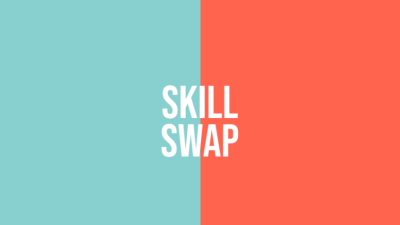For years, community builders have embraced the mantra of reducing friction at all costs. Make joining easy. Simplify onboarding. Remove barriers. The conventional wisdom suggests that any obstacle between potential members and your community reduces growth and engagement.
Yet something counterintuitive emerges when we examine our most meaningful communities – both online and offline. The groups that command our deepest loyalty often required significant effort to join. The communities we value most typically demanded something meaningful from us before granting membership.
This observation challenges the frictionless paradigm dominating modern community design. Perhaps certain types of friction, thoughtfully implemented, create stronger communities rather than weaker ones.
The Psychological Value of Earned Belonging
Human psychology reveals why friction often strengthens community bonds. The effort justification principle shows that we value what we work for more than what comes easily. Communities requiring meaningful investment – whether time, vulnerability, skill demonstration, or financial commitment – trigger this psychological mechanism.
When we overcome barriers to join a group, we unconsciously increase our valuation of that community. What required effort must have value. What tested our commitment must be worth committing to. This internal justification creates stronger initial bonds than frictionless alternatives.
Social identity theory further explains this phenomenon. Our sense of identity partially forms through group affiliations. Communities with distinctive entry requirements create clearer boundaries around who belongs, strengthening members’ sense of shared identity and distinctiveness from non-members.
Distinguishing Strategic Friction from Poor Design
Critical distinctions exist between strategic friction that strengthens communities and frustrating barriers that simply drive people away. Strategic friction serves clear community purposes – it tests commitment, ensures value alignment, demonstrates necessary skills, or builds shared experiences. Poor design creates arbitrary obstacles that serve no community purpose.
Strategic friction appears early in the community journey, establishing the relationship terms from the beginning. It transparently communicates why the barrier exists and what community value it protects. When members understand friction’s purpose, they experience it as meaningful rather than annoying.
At BuildBonding, we’ve observed repeatedly that communities with thoughtful friction not only retain members longer but also generate more meaningful contributions and connections among those members.
Application Processes as Community Strengtheners
Selective application processes represent one of the most common and effective forms of strategic friction. Communities ranging from professional organizations to artist collectives use applications not just to control numbers but to strengthen the resulting community.
Well-designed applications serve multiple community purposes simultaneously. They communicate community values and expectations clearly. They prompt reflection that helps potential members self-select appropriately. They create opportunities for community leaders to identify how new members might contribute uniquely.
The most effective applications don’t simply filter for credentials but instead probe for alignment with community purpose and values. Questions that require vulnerability and authentic sharing set the tone for the relationships that will form within the community.
Financial Investment and Community Commitment
Money creates particularly powerful friction in community design. Financial commitments test seriousness and create skin in the game for new members. When people pay for membership, they typically show up more consistently and engage more meaningfully to justify their investment.
However, financial barriers come with important ethical considerations around accessibility and inclusion. Thoughtful communities address this tension through sliding scales, scholarship opportunities, or alternative contribution pathways that maintain meaningful friction without excluding economically disadvantaged members.
The specific amount matters less than the psychological threshold it represents. Even modest financial commitments can significantly increase member engagement compared to free alternatives. This explains why freemium communities often struggle with sustained participation despite large membership numbers.
Knowledge Barriers and Community Identity
Some communities maintain strength through knowledge-based friction. Members must demonstrate specific expertise, complete educational requirements, or pass knowledge tests before gaining full membership. This approach creates communities with shared intellectual foundations and vocabulary.
Professional communities naturally embrace this model through credentialing processes. However, even hobby-based communities benefit from knowledge thresholds that ensure meaningful participation. Photography groups might require basic technical understanding before admission. Book clubs might expect familiarity with certain foundational texts.
These knowledge requirements create common ground that facilitates deeper discussion and collaboration once inside the community. Rather than excluding people permanently, well-designed knowledge friction often includes pathways for motivated newcomers to acquire necessary background.
Time-Based Friction and Progressive Engagement
Time represents another valuable friction dimension. Communities that unfold gradually often form deeper bonds than those offering immediate full access. Gradual revelation of community spaces, practices, or knowledge creates anticipation and rewards continued participation.
Japanese tea ceremony communities exemplify this approach. New practitioners spend years working through progressive levels of access and understanding. This deliberate pacing transforms what could be a simple beverage ritual into a lifelong community of practice with extraordinary retention and dedication.
Digital communities can implement similar progressions through staged access to different platform areas, gradually revealed community traditions, or time-based achievement of different member statuses. These temporal designs create a sense of journey that strengthens member identification with the community.
Effort Thresholds as Filtering Mechanisms
Communities sometimes implement effort thresholds specifically to filter for desired member qualities. These barriers intentionally select for persistence, creativity, problem-solving ability, or other traits aligned with community values.
Historical examples include puzzles hidden in job postings at tech companies or deliberately difficult application processes for certain artistic collectives. These mechanisms attract individuals who enjoy the specific type of effort required – an early alignment between member attributes and community culture.
While potentially exclusionary when poorly designed, thoughtful effort thresholds can identify members likely to thrive in and contribute to the particular community environment. The key lies in designing friction that selects for characteristics genuinely relevant to community participation rather than arbitrary barriers.
Vulnerability Requirements and Emotional Connection
Perhaps the most powerful community friction involves vulnerability requirements – expectations that members share authentic experiences, challenges, or aspirations with the group. This emotional investment creates deeper connections than communities based solely on transactional exchanges.
Traditional religious communities intrinsically understand this principle. Confession, testimony, and ritual vulnerability create strong bonds among members who have witnessed each other’s authentic humanity. Modern therapy groups and support communities build on similar foundations.
Digital communities can implement vulnerability friction through application questions requiring personal reflection, onboarding processes that include story sharing, or community rituals that periodically invite deeper disclosure among established members.
Designing Strategic Friction for Your Community
Creating effective friction begins with clarity about your community’s core purpose and values. What specific qualities define your ideal members? What behaviors do you want to encourage? What community elements do you most need to protect? Answering these questions reveals where strategic friction provides the most benefit.
Consider implementing friction at multiple journey stages rather than concentrating it all at entry. Initial barriers might filter for basic alignment, while progressive friction throughout the member journey continually deepens commitment and engagement.
Test friction elements with small member cohorts before full implementation. Gather feedback about which requirements felt meaningful versus frustrating. Continuously refine your approach based on how different types of friction impact community dynamics.
Ethical Considerations in Friction Design
Ethical friction design requires ongoing attention to issues of accessibility, privilege, and inclusion. Barriers that select for commitment can unintentionally exclude people facing structural disadvantages or with different cultural backgrounds.
Regular community audits should examine whether your friction mechanisms disproportionately impact certain demographic groups. Developing alternative pathways that maintain meaningful commitment requirements while accommodating different circumstances helps build more diverse yet still cohesive communities.
The most thoughtful communities view friction not as a filtering mechanism primarily but as a relationship-building tool that strengthens bonds with and among the members who do join.
Measuring the Impact of Strategic Friction
Several metrics help evaluate whether your friction design strengthens community bonds effectively. Retention duration – how long members stay active – provides one key indicator. Participation consistency – how regularly members engage – offers another. Contribution depth – the meaningfulness of member participation – provides particularly valuable insight.
Communities with well-designed friction typically show higher scores on these metrics than frictionless alternatives, even if their absolute membership numbers grow more slowly. This quality-over-quantity approach often creates more sustainable community models in the long term.
Conclusion: The Courage to Require More
Building communities with meaningful friction requires courage in a world obsessed with frictionless experiences. It means potentially growing more slowly than competitors. It requires explaining your approach to stakeholders focused on member acquisition metrics.
Yet the communities that ultimately transform members’ lives rarely take the easy path. They ask for real commitment. They require genuine investment. They maintain standards that not everyone will meet.
By thoughtfully designing strategic friction into your community architecture, you create spaces where deeper human connections can flourish – where membership carries genuine meaning precisely because it wasn’t easily obtained. In a world of increasingly superficial digital interactions, these friction-forged communities offer what many people hunger for most: relationships and belonging that feel truly earned.





